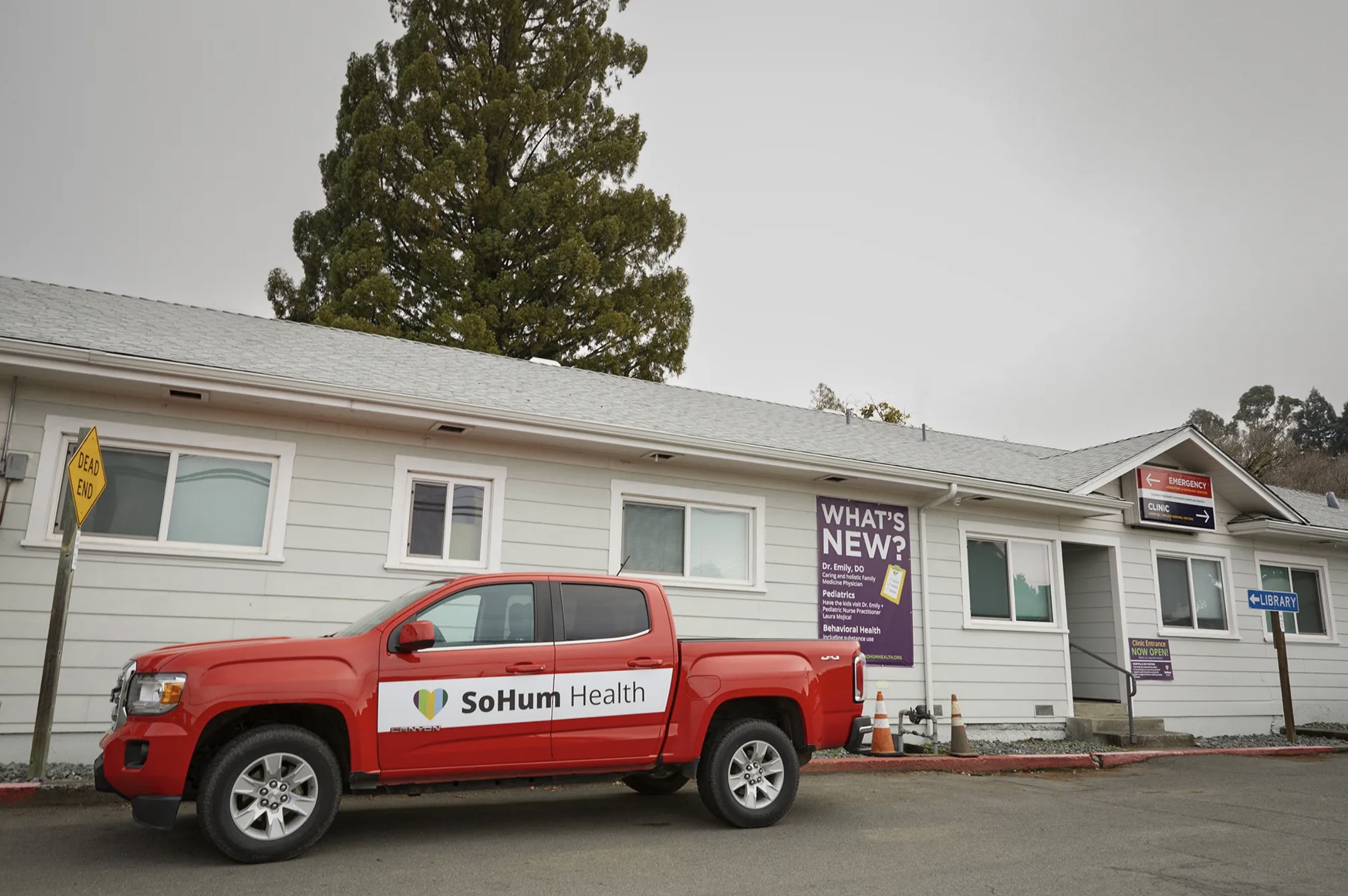The Jerold Phelps Community Hospital operated by SoHum Health in Garberville on Dec. 17, 2022. Photo by Paul Collins for CalMatters
It’s been close to 30 years since California enacted the bulk of its seismic safety standards, but hospitals continue to ask for more time and flexibility. They argue that many facilities, especially smaller ones, can’t afford the retrofitting or replacement costs.
Jerold Phelps Community Hospital in Garberville, California is one of the smallest in the country. Its mere nine acute-care beds serve a community of about 10,000 people in southern Humboldt County. The next closest emergency room is about an hour’s drive north.
Despite its small size, the hospital is facing a hefty price tag to meet the 2030 retrofit deadline required under the state’s seismic safety standards - about $50 million for a new single story hospital that would replace its 1960s building.
Although it’s been decades since California implemented its strict seismic safety requirements, paying for those upgrades continues to be a tough task, especially for smaller facilities with limited resources and funding, according to hospital officials across the state. Like Jerold Phelps Community Hospital, two-thirds of California hospitals have yet to meet the looming state seismic deadline that requires hospital buildings to be updated to ensure they can keep operating after an earthquake.
The 6.4 magnitude quake that struck the Humboldt area on Dec. 20 was a stark reminder of California’s vulnerability to seismic activity. Hospitals in the county reported minimal damage and no threat to patients. Two hospitals, in Eureka and Fortuna, lost power and needed generators, according to the California Office of Emergency Services.
Hospital administrators acknowledge their buildings need to remain safe and available for emergency services following a quake, but they say they need more time to complete their upgrades and construction projects, especially as many are still reeling from the financial strains of responding to the COVID-19 pandemic. Officials at smaller hospitals say that in addition to time, they need funding. They also want more flexibility. The Legislature, they say, should revisit the rules and grant them more leeway for buildings that provide non-emergency services.
“Everyone wants to make our hospitals safe - that’s not the issue. It’s just a tremendous amount of capital that is being poured into this,” said Debi Stebbins, executive director at the City of Alameda Health Care District, which oversees Alameda Hospital.
The seismic safety standards debate is a familiar one in Sacramento, and one that hospital administrators expect will come up again during this new legislative term. Officials at the California Hospital Association said their immediate goal is to educate the large new class of lawmakers about the state’s seismic safety laws and the challenges hospitals face.
Labor groups, however, have strongly opposed hospitals’ ongoing requests for deadline extensions and amendments. They argue that hospitals have had plenty of time - about 30 years - to bring their buildings up to the required standards.
“They have had many, many, many years to do this, and to now say they need an extension is just not appropriate,” said Cathy Kennedy, president of the California Nurses Association. “I think they can do it.”

